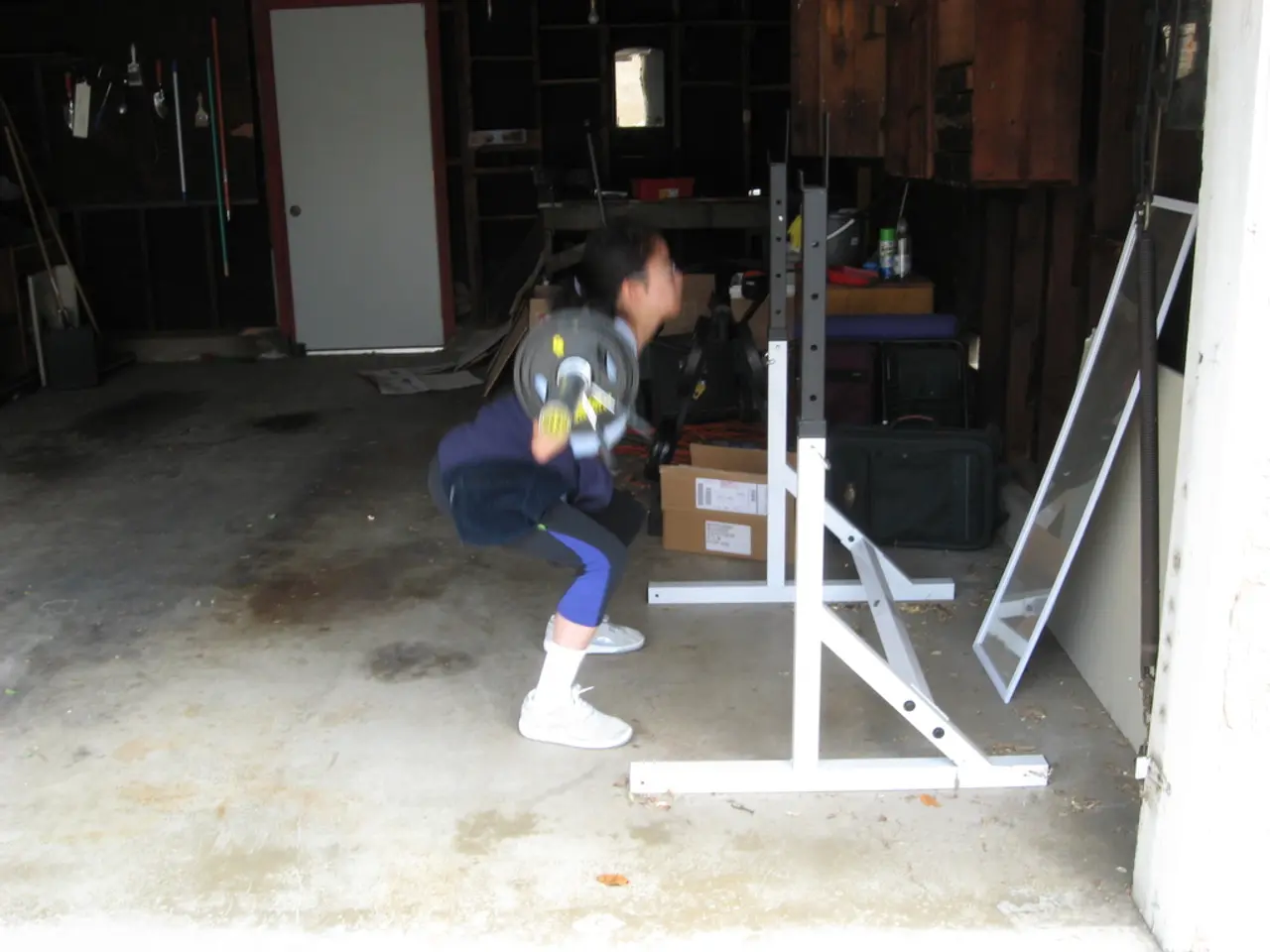Barbells and Their Warning: Weights, Dimensions, and Training Sessions
Barbells, a staple in many fitness regimes, come in various sizes and weights to cater to different levels of strength and experience.
For those starting out, standard barbells typically range from 4 feet to 6 feet in length and weigh around 20 pounds. As you progress, you might find yourself gravitating towards the longer and heavier Olympic barbells.
Olympic barbells, renowned for their use in competition, are 7 feet long and can weigh 45 pounds. They are more standardized and have a shaft diameter of about 28 mm and a sleeve diameter of 50 mm. For women, Olympic barbells are slightly shorter, at 6.5 feet long, and weigh 33 pounds.
These longer barbells are perfect for moves like the bench press, a chest and shoulder strengthening exercise that requires a bench, a spotter, and involves slowly lowering and raising the barbell over your chest. The barbell back squat, which targets the glutes and quads, and the deadlift, a quintessential barbell move that works the back muscles, glutes, and quads, are also best performed with Olympic barbells.
For a safer deadlift, Trap/Hex bars, with their hexagon shape, can be a great choice. For specific exercises like squats or curls, there are also specialized barbells designed to make them easier and safer.
Junior Olympic barbells, at 5.5 feet long and 22 pounds, are suitable for younger lifters or those new to weightlifting. Powerlifting barbells, known for their rigidity and higher loading capacities, are ideal for more experienced lifters.
Swiss bars, with several different handles, offer versatility for a variety of exercises. Safety bars, designed for safer back squats, have no standard size.
The barbell curl, a move for strength and definition in the arms, and the overhead press, a move for shoulder and upper arm definition, are two other exercises that can be performed with a barbell.
As with any fitness activity, it's important to use your chosen barbell safely and effectively. Connecting with a personal trainer can help ensure you're using the barbell correctly and getting the most out of your workout.
Olympic barbells, with their 2-inch diameter collars that rotate freely, are designed for competition-level lifts. However, regardless of the type of barbell you choose, remember to always prioritize safety and proper form.
Read also:
- Honoring Ayurveda Day 2024: Tapping into the Power of AYUSH for Worldwide Wellbeing
- casesof West Nile virus resulting in fatalities in Greece, with seven individuals confirmed to have succumbed to the disease
- Nutrient-Packed Wonders: Why Sardines Deserve Respect for Their Health Benefits
- Assessing the Importance: Deciphering the Meaning Behind an Attention Deficit Hyperactivity Disorder (ADHD) Diagnostic Examination





